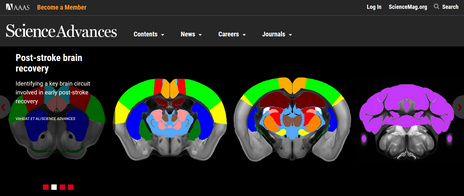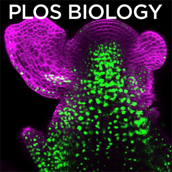Publications
- Kinany N, Khatibi A, Lungu O, J Finsterbusch, Büchel C, Marchand-Pauvert V, Van De Ville D, Vahdat S, Doyon J (2023) “Decoding cerebro-spinal signatures of human behavior: Application to motor sequence learning”, NeuroImage, 275, 120174
- Farrens A J, Vahdat S, Sergi F (2023) “Changes in resting state functional connectivity associated with dynamic adaptation of wrist movements”, Journal of Neuroscience, JN-RM-1916-22.
- Khatibi A*, Vahdat S*, Lungu O, Finsterbusch J, Büchel C, Cohen-Adad J, Marchand-Pauvert V, Doyon J (2022) “Brain-spinal cord interaction in long-term motor sequence learning in human: an fMRI study”, Neuroimage, https://doi.org/10.1016/j.neuroimage.2022.119111. * Equal contribution
- Choy MK, Dadgar-Kiani E, Cron G, Duffy B, Schmid F, Edelman BJ, Asaad M, Chan RW, Vahdat S, Lee JH (2022) “Repeated hippocampal seizures lead to brain-wide reorganization of circuits and seizure propagation pathways", Neuron, Jan 19;110(2):221-236.e4, Link
- Landelle C, Lungu O, Vahdat S, Kavounoudias A, Marchand-Pauvert V, De Leener B, Doyon J, (2021) "Investigating the human spinal sensorimotor pathways through functional magnetic resonance imaging", NeuroImage , Dec 15;245:118684, PDF
- Vahdat S, Pendharkar AV, Chiang T, Harvey S, Uchino H, Cao Z, Kim A, Choy MK, Chen H, Lee HJ, Cheng MY, Lee JH, Steinberg GK (2021) “Brain-wide neural dynamics of post-stroke recovery induced by optogenetic stimulation", Science Advances, 7, eabd9465. PDF
- Babadi S, Vahdat S, Milner T (2021) “Neural substrates of muscle co-contraction during dynamic motor adaptation”, Journal of Neuroscience, JN-RM-2924-19.
- Vahdat S, Khatibi A, Lungu O, Finsterbusch J, Büchel C, Cohen-Adad J, Marchand-Pauvert V, Doyon J (2020) “Resting-state brain and spinal cord networks in humans are functionally integrated”, PLoS Biology, 18(7): e3000789. PDF
- Vahdat S, Darainy M, Thiel A, Ostry DJ, (2019) “A single session of robot-controlled proprioceptive training modulates functional connectivity of sensory-motor networks and improves reaching accuracy in chronic stroke”; Neurorehabilitation & Neural Repair, Jan; 33(1):70-81. PDF
- Darainy M, Vahdat S, Ostry DJ. (2019) “Neural Basis of Sensorimotor Learning in Speech Motor Adaptation”, Cerebral Cortex, 29(7):2876-2889.
- Bernardi NF, Van Vugt FT, Valle-Mena R, Vahdat S, Ostry DJ. (2018) “Error-related persistence of motor activity in resting state networks”. Journal of Cognitive Neuroscience, Aug 20:1-19.
- Doyon J, Gabitov E, Vahdat S, Lungu O, Boutin A, (2018) “Current issues related to motor sequence learning in humans”, Current Opinion in Behavioral Sciences, Volume 20, April 2018, Pages 89-97 PDF
- Vahdat S, Fogel S, Benali H, Doyon J. (2017) “Network-wide reorganization of procedural memory during non-REM sleep revealed by fMRI”. eLife, 2017; 6: e24987. PDF
- Vahdat S, Albouy G, King B, Lungu O, Doyon J, (2017) “Editorial: online and offline modulators of motor learning”. Frontiers in Human Neuroscience, 11:6, doi: 10.3389.
- Sidarta, A., Vahdat S, Bernardi N, Ostry DJ, (2016) “Somatic and reinforcement-based plasticity in the initial stages of human motor learning” Journal of Neuroscience, 16;36(46):11682-11692.
- Maneshi M, Vahdat S, Grova C, Gotman J, (2016) “Validation of shared and specific independent components analysis (SSICA) for between groups comparison in fMRI”. Brain Imaging Methods: Frontiers in Neuroscience, 10:417.
- Vahdat S, Lungu O, Cohen-Adad J, Marchand-Pauvert V, Benali H, Doyon J, (2015) “Simultaneous brain-cervical cord fMRI reveals intrinsic spinal cord plasticity during motor sequence learning”, PLoS Biology,13(6):e1002186. PDF
- Thiel A, Vahdat S (2015) “Structural and resting-state brain connectivity of motor networks after stroke”, Stroke, 46(1):296-301. PDF
- Maneshi M, Vahdat S, Fahoum F, Grova C, Gotman J, (2014) “Specific resting-state brain networks in mesial temporal lobe epilepsy”, Frontiers in Neurology, 5:127.
- Vahdat S, Darainy M, Ostry DJ, (2014) “Structure of Plasticity in Human Sensory and Motor Networks Due to Perceptual Learning”, Journal of Neuroscience, 34(7):2451-2463. PDF
- Darainy M*, Vahdat S*, Ostry DJ, (2013) “Perceptual Learning in Sensorimotor Adaptation”, Journal of Neurophysiology, 110(9):2152-62. * Equal contribution.
- Vahdat S, Maneshi M, Grova C, Gotman J, Milner TE, (2012) “Shared and Specific Independent Components Analysis for Between-Groups Comparison”, Neural Computation, 24(11):3052-90. PDF
- Vahdat S, Darainy M, Milner TE, Ostry DJ, (2011) “Functionally specific changes in resting-state sensorimotor networks following motor learning”, Journal of Neuroscience, 31(47):16907-15. PDF
- Salman B*, Vahdat S*, Lambercy O, Dovat L, Burdet E, Milner TE, (2010) “Changes in Muscle Activation Patterns Following Robot-assisted Training of Hand Function after Stroke”, Intelligent Robots and Systems, Proceedings of IEEE/RSJ, P.5145-5150, DOI:10.1109/IROS.2010.5650175. * Equal contribution. PDF
- Bayati H, Vahdat S, VosoughiVahdat B, (2009) ”Shared and Specific Synchronous Muscle Synergies Arisen from Optimal Feedback Control Theory”, Neural Engineering, Proceeding of IEEE EMBS, P.155-158. DOI:10.1109/NER.2009.5109258.
- Bayati H, Vahdat S, VosoughiVahdat B, (2009) “Investigating the properties of optimal sensory and motor synergies in a nonlinear model of arm dynamics” Neural Networks, Proceeding of the IJCNN, P.272-279.
- Vahdat S, Maghsoudi A, Hajihasani M, Towhidkhah F, Gharibzadeh S, Jahed M, (2006) “Adjustable primitive pattern generator: a novel cerebellar model for reaching movements”, Neuroscience Letters; 406(3):232-4.
- Mehrtash A, Vahdat S, Soltanian-Zadeh H, (2006) “Fuzzy Edge Preserving Smoothing Filter Using Robust Region Growing” Fuzzy Systems, Proceedings of IEEE on Computational Intelligence, P.1748 – 1755, DOI: 10.1109/FUZZY.2006.1681942.

